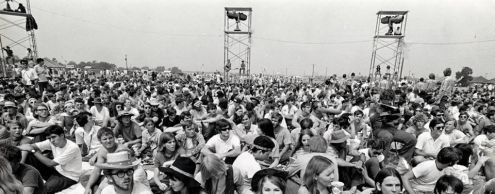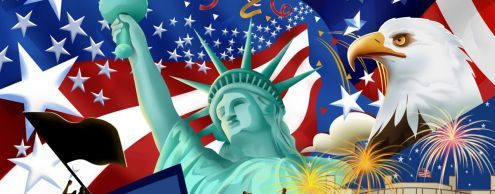The history of the US flag
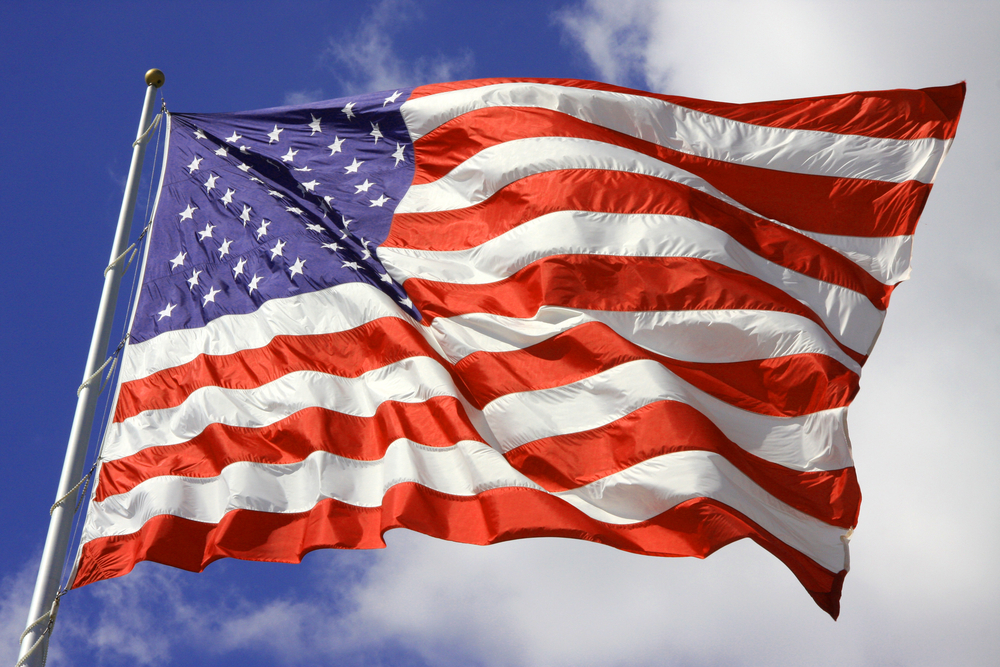
It will be fair to admit that the national banner of the United States of America is the most recognizable in the world. Visually, it is familiar even to schoolchildren of remote settlements on all the inhabited continents. But the details of the history of the American banner, coupled with the traditions of celebrating of its Day are known to a lesser degree.
It's easy to guess that beginning of the history of creation of the American banner by the Americans is dated by the end of the 17th century, when in 1776 the descendants of the first colonists realized themselves as a separate nation and declared independence from Great Britain. The Declaration of Independence proclaimed appearance of the United States on the world map, and in 1783 the States finally won the battle for independence.
Nevertheless, on July 4, 1776 on the day of signing the Declaration of Independence the young state did not have its own banner.
On June 14, 1777 the official law on the national banner was adopted, legalizing a panel of 13 red and white horizontal stripes as a state symbol, as well as a blue rectangle with 13 white five-pointed stars.
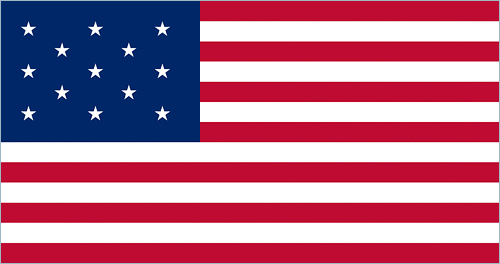
13 stripes symbolized the number of first independent states. These are Delaware, Pennsylvania, New Jersey, Georgia, Connecticut, Massachusetts, Maryland, South Carolina, New Hampshire, Virginia, New York, North Carolina, Rhode Island.
It is impossible to establish today who exactly came up with such a variant of the banner, but historians are inclined to the version of the authorship of Francis Hopkinson - one of the "fathers of the nation" who signed the Declaration of Independence.
The first in the history the US banner, as it is commonly believed, was sewn by Betsy Ross (she is often called a dressmaker; nevertheless, this lady belonged to a very respected circle). Betsy Ross's involvement in production of the first panel is reflected in the literature and painting, although there is no documentary evidence of the legend, which not devoid of historical believability.
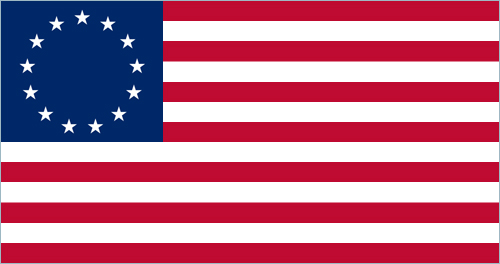
In June 1776, Betsy Ross was invited to the meeting where, in addition to the President Washington, the uncle of her late husband - Colonel Robert Morris was present, one of the "fathers" of a young state.
As the legend says, it was Betsy, who was charged by the participants of the meeting to sew the banner according to the sketch, which depicted the hexagonal stars. Betsy Ross appreciated the project critically and suggested that the stars be five-pointed, immediately cutting them with scissors.
The first battle, in which the fighters for independence came under a new banner, was the battle at Brandywine in Pennsylvania in September, 1777.
The first change in the banner of the United States dates back to May 1, 1795 - the day when the official entry into the USA of the states of Vermont and Kentucky was officially fixed. The addition of two stripes and two stars on the panel coincided with the famous British shelling of Fort McHenry in Baltimore. These two events 19 years later - in 1814 - were sung in the poem "The Star-Spangled Banner" by Francis Scott Key. It is this text that we now know as the hymn of the United States of America.
In 1818 the American flag banner changed its appearance again. The reason was joining of the states of Indiana, Louisiana, Mississippi, Ohio and Tennessee. The stars became five more, but it was decided not to add stripes: on the contrary, it was decided to leave their original number - 13. Since that time, only stars were added to the panel.
Subsequently, the US banner underwent changes 25 more times. A new star, traditionally symbolizing joining of a new state, was added every holiday day of July 4.
On July 4, 1819 a star appeared in the blue rectangle of the banner, marking annexation of the State of Illinois.
That same day, but in 1820th new stars on the banner marked entry into the USA of Alabama and Maine, in 1822nd - Missouri, in 1836th -Arkanzas in 1837th - Michigan, in 1845th - Florida, in 1846th - Texas, in the 1848th - Iowa, in 1848th - Wisconsin, in the 1851st - California, in the 1858th - Minnesota, in the 1859th - Oregon, in the 1861st - Kansas, in 1863rd - West Virginia, in the 1865th - Nevada, in the 1867th - Nebraska, in the 1877th - Colorado, in the 1890th - North Dakota, South Dakota, Idaho, Washington, Montana, in 1891st - Wyoming, in 1896th - Utah, in 1908th - Oklahoma, in 1912 - New Mexico and Arizona, in 1959th - Alaska, in the 1960th - Hawaii
As a result, on the panel of the US flag 50 stars are presented in nine rows. The project on adding a 51st star, symbolizing annexation of Puerto Rico, is under consideration.
In most cases, the authors of a visual decision of the banner were different people. The project of the last version - with 50 stars - was developed in 1958 by 17-year-old Robert Heft from the provincial school in Ohio, who received this assignment from his teacher with the prospect of sending the drawing for approval to the Congress.
We will also tell about the history of appearance in the calendar of a Flag Day. The history preserved the name of the person who first celebrated it. This is Bijay Sigrand, a schoolteacher who celebrated a Flag Day in 1885 with his pupils, which event soon became widely known.
A year later, the tradition laid by the teacher was picked up by many, but it was only in 1916 that President Wilson signed an official document declaring June 14 a Flag holiday, and in 1949 President Truman declared the National Flag Day.
Americans highly respect the ethics of dealing with the flag. It is possible to hang it upside down only when "SOS" signal is being sent in this way. At the same time, US citizens who burn the flag as a protest against the actions of the country's administration are not prosecuted by law.
Another fact that seems rather contradictory: any image of the flag, including on packaging, in the USA is equated directly with the flag, and citizens are not recommended to wear ties, T-shirts and other wardrobe items with this image because only one form of utilization of a worn out flag is allowed - burning. Nevertheless, everyone who wishes may wear this image everywhere, wherever they please, without fear of punishment.
To comment on the materials of the portal can only registered users. Log in.
